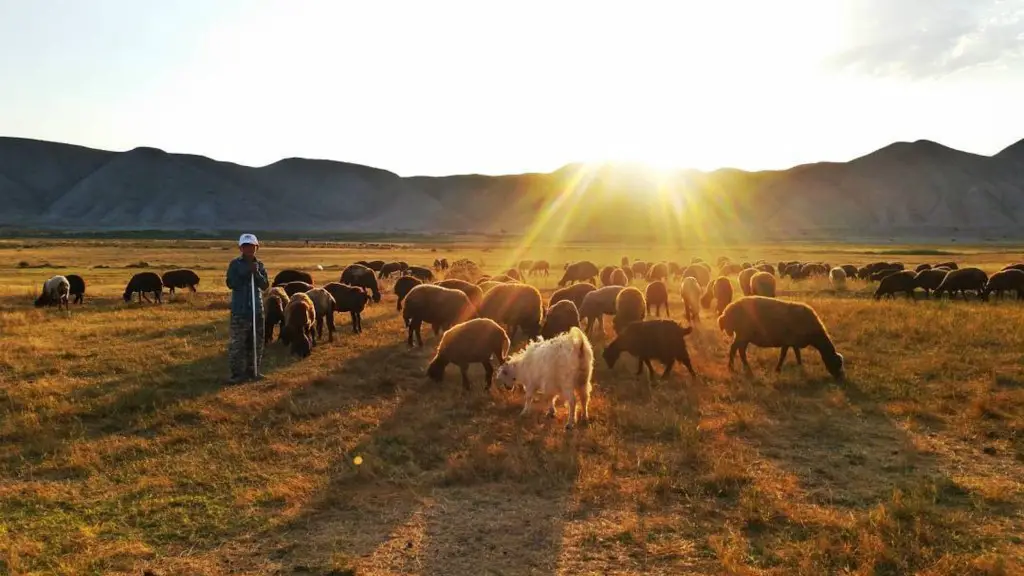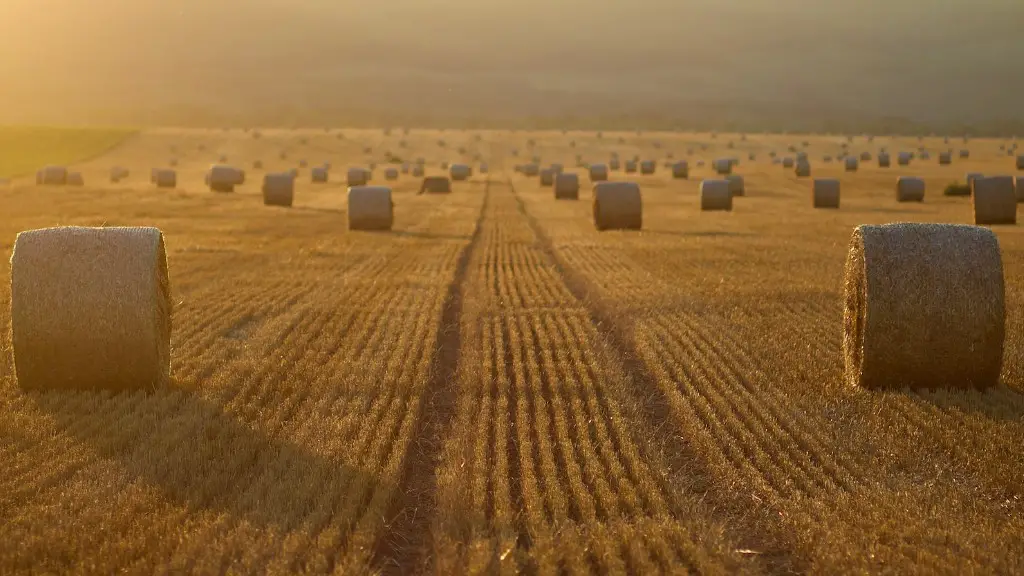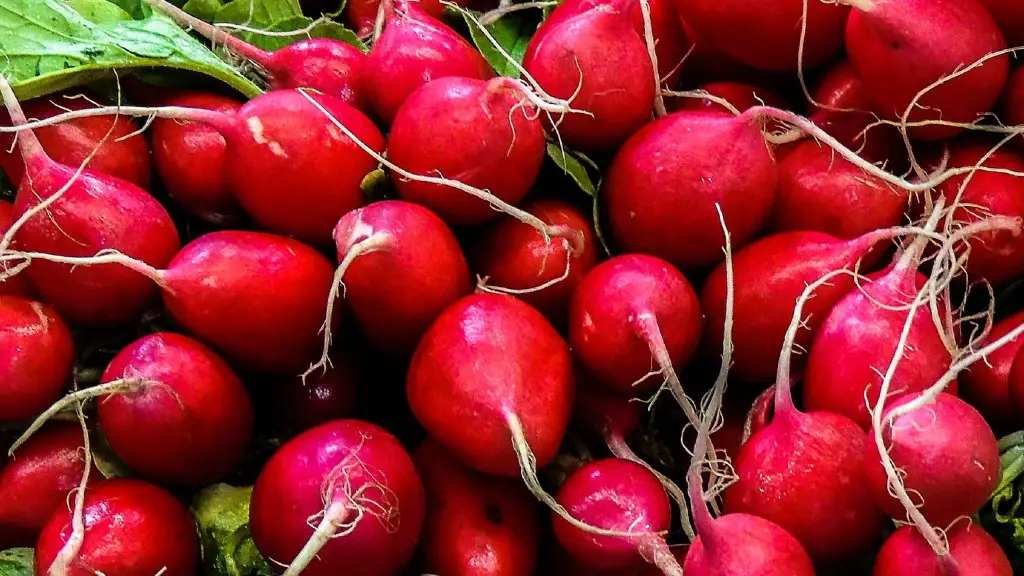Methane is a gas that is produced by the decomposition of organic matter. It is the main component of natural gas and is often used as a fuel. Methane emissions from agriculture come from a variety of sources, including livestock, rice production, manure management, and field burning.
Agricultural activities are responsible for about one-fifth of global methane emissions.
How much methane gas is produced by agriculture?
Livestock emissions – from manure and gastroenteric releases – account for roughly 32 per cent of human-caused methane emissions. Agriculture is the predominant source of these emissions, with livestock rearing being the main contributor.
Methane is a powerful greenhouse gas, with a global warming potential (GWP) of 28-36 over a 100-year time horizon. This means that, pound for pound, methane is around 86 times more potent than carbon dioxide (CO2) over a 20-year timeframe, and 32 times more potent over a 100-year timeframe.
Livestock emissions are therefore a significant contributor to climate change, and reducing these emissions should be a priority for governments and businesses alike. There are a number of ways in which this can be done, including:
-Improving livestock husbandry practices
-Reducing food waste
-Increasing the efficiency of livestock production
-Capturing methane emissions from livestock
By taking action to reduce livestock emissions, we can help to mitigate climate change and create a more sustainable future for all.
Methane is produced naturally as a result of the decomposition of organic matter. However, the methane emissions from livestock manure and agro- industrial wastewater are much higher than the natural background levels. These emissions are a significant contributor to climate change and have a negative impact on the environment.
What is the biggest contributor to methane
Other things to know about methane emissions:
-Methane is a potent greenhouse gas, about 30 times more powerful than carbon dioxide in terms of its ability to trap heat in the atmosphere.
-Methane emissions from human activities account for about a fifth of the total greenhouse gas emissions from the United States.
-The largest sources of methane emissions from human activities in the United States are oil and gas systems, livestock enteric fermentation, and landfills.
-Methane emissions from oil and gas systems can come from a variety of sources, including leaks and flaring at natural gas wells, leaks from pipelines and storage facilities, and coal mine methane.
-Livestock enteric fermentation is the process by which methane is produced in the stomachs of cows and other ruminant animals.
-Landfills are the third largest source of methane emissions in the United States, accounting for about a third of all methane emissions from human activities.
Methane is a greenhouse gas that is produced by both natural and human activities. Wetlands, termites, and oceans are all natural sources of methane emissions. The methane produced by natural sources is completely offset by natural methane sinks. This has been so for thousands of years.
Do vegans produce more methane than meat eaters?
The study found that the average meat-eater’s diet emits around 8.1kg of greenhouse gases per day, while the average vegetarian’s diet emits around 4.3kg and the average vegan’s diet emits around 2.9kg.
The study’s lead author, Joseph Poore, said that the findings showed that what people eat has a “huge impact” on the environment. He added that a vegan diet is “ probably the single biggest way to reduce your impact on planet Earth, not just greenhouse gases, but global acidification, eutrophication, land use and water use”.
Methane (CH4) is a trace gas in the atmosphere that is considered to play a major role in what is called the “greenhouse effect”. There are six major sources of atmospheric methane: emission from anaerobic decomposition in (1) natural wetlands; (2) paddy rice fields; (3) emission from livestock production. Each of these sources has the potential to be reduced through mitigation measures. For example, better management of livestock production, including manure management and anaerobic digestion, can reduce methane emissions.
How much methane is produced by agriculture in the US?
According to the EPA, agriculture contributes 96% to US greenhouse gas emissions, and about 36% of methane emissions, mostly from livestock. This is a significant contribution to climate change, and it is important to take steps to reduce these emissions. There are a number of ways to do this, such as reducing the number of livestock, improving agricultural practices, and using renewable energy.
Methane is a gas that is produced by the decomposition of plants and animals. Cows are a major source of methane, but they are not the only source. Decomposing plants also release methane, but no more or less than cows.
What percent of greenhouse gases come from agriculture
Non-food agricultural products are those that are not used for human or animal consumption, such as cotton, wool, leather, rubber and biofuels. They can still have a significant impact on the environment, contributing to global emissions. The estimate for emissions from non-food agricultural products is 33%.
Since 2016, over 50 companies and organizations have joined the Global Methane Initiative (GMI) and committed to reducing their methane emissions.
However, only the United States and Brazil are part of the Global Methane Pledge, which was launched in 2019 and requires members to report their methane emissions and take action to reduce them.
Collectively, the world’s five largest methane emitters are responsible for close to half of all methane emissions globally.
Reducing methane emissions is critical to mitigating climate change, and the actions of the United States and Brazil could set an example for other large emitters to follow.
Why is methane so much worse than co2?
Methane is a powerful greenhouse gas that contributes significantly to global warming. Though it doesn’t last as long in the atmosphere as carbon dioxide, it is much more efficient at trapping heat, meaning that it has a larger impact on climate change in the short term. Human activities, like agriculture and fossil fuel extraction, are responsible for a significant portion of the methane in the atmosphere, and thus are contributing to the accelerated pace of climate change.
It’s interesting to note that only 1 percent of the gases expelled in farts actually smell bad. These include foul-smelling gases such as hydrogen sulfide. More than 99 percent of the gas that people pass consists of just nitrogen, oxygen, carbon dioxide, hydrogen, and methane. So, next time you let one rip, don’t be too concerned about the odor.
Where does most of the methane on Earth come from
Methane is a gas that comes from a variety of sources, both natural and man-made. Wetlands and animal digestion are two of the most common natural sources, while thermogenic sources like oil and gas production are responsible for the majority of man-made methane.
Recent analysis has indicated that there may be additional sources of atmospheric methane that have not been considered previously. This is an important issue to consider, as methane is a powerful greenhouse gas that can contribute to climate change.
Onions may produce more methane than other vegetables, but they also have the highest energy density. This means they have the potential to produce more methane than other vegetables. Blueberries are the winners from the fruit side when it comes to methane production. Hawkins found that they have the potential to produce more methane than any other fruit.
Which crop is source of methane?
Irrigated rice fields are one of the major sources of methane emissions from rice production. Although irrigated rice comprises only 50% of the total harvested rice area, it produces 70% of the total rice harvested. In terms of methane emissions, this means that irrigated rice fields are responsible for approximately 35% of the total methane emissions from rice production.
So while it’s true that beef is far worse for the environment than other proteins, that doesn’t mean that cheese and other dairy products are in the clear. According to the Oxford study, dairy beef has a GHG emissions and land use that is 36 and 6 times greater than that of peas. This makes it clear that if you’re concerned about your impact on the environment, you should avoid all animal products as much as possible.
Warp Up
There is no one answer to this question as the amount of methane produced by agriculture varies depending on a number of factors, including the type of agriculture, the location, and the specific agricultural practices used. However, it is estimated that global methane emissions from agriculture (including livestock) account for approximately 10% of all human-induced methane emissions.
Methane is produced by agriculture to a great extent. This gas is one of the main reasons for the greenhouse effect and climate change. Therefore, more efficient and environmentally friendly ways to produce food must be found in order to mitigate the negative impacts of agriculture on the planet.





